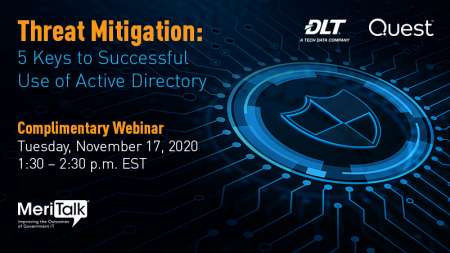
Two of the Federal government’s top officials in charge of acquisition discussed their collaborative and parallel efforts to implement category management and address the coronavirus pandemic across both defense and civilian agencies.
Speaking Oct. 27 at the ACT-IAC ReImagine Nation ELC Conference, Emily Murphy, administrator of the General Services Administration (GSA), and Lisa Hershman, chief management officer of the Department of Defense (DoD), discussed the benefits of collaboration between civilian and defense acquisition efforts.
“The collaboration between GSA and the Department of Defense on this has been amazing,” said Murphy. “It’s really given us the opportunity to go in and look at where we have those shared opportunities and where we can learn from each other. I remember the GSA I worked at 15 years ago, and that’s really a change of the relationship between the two agencies.”

“We’re introducing very new ways of thinking [as compared to] when everything was led by price and price point, and now that is a lesser metric,” said Hershman. “It’s still important, certainly, but not the lead. I think we’re changing the narrative and showing that the results will follow,” she added.
“How do we take the results off of just being an LPTA [Lowest Price Technically Acceptable] approach where we’d go for the lowest price technically acceptable every time, and really get the results out of those contract dollars each and every time,” said Murphy, describing the mindset behind recent shifts.
Regarding COVID-19, the discussions around the future of work are particularly salient for Murphy and Hershman, who both have a large role in the layout and use of the Federal portfolio of buildings.
“We’re still at maybe about 95 percent of our workforce teleworking, yet we got our best customer satisfaction scores ever in the Federal Acquisition Service this year. We got our best vendor satisfaction scores this year as well,” noted Murphy. She also noted that GSA is utilizing a robotic process automation (RPA) bot to collect information on when employees are utilizing their workspace, and will use that information to make data-driven decisions in the future.
“[People] are looking for some kind of hybrid approach that keeps them connected. Surprisingly, at all levels of the organization, people said ‘I miss talking to people,’” noted Hershman. She also noted that DoD is using AI to help ensure that its workspaces are properly spaced out to maintain social distancing.
However, the security challenges that COVID-19 has brought along with increased telework are key issues that GSA and DoD are working to address.
“Our business systems and IT support tools were definitely stress tested, and we found that we were not where we needed to be to have 80 percent of our workforce teleworking. Our CIO and team did an amazing job quickly adapting, but even with classified work, not everybody had the right tools,” noted Hershman. “Buying those and getting those in place with category management is a great opportunity.”
Asynchronous work and telework could help with recruiting and retaining employees, but it also means that “we need to do a better job of sharing data across agencies and within agencies,” noted Murphy.
